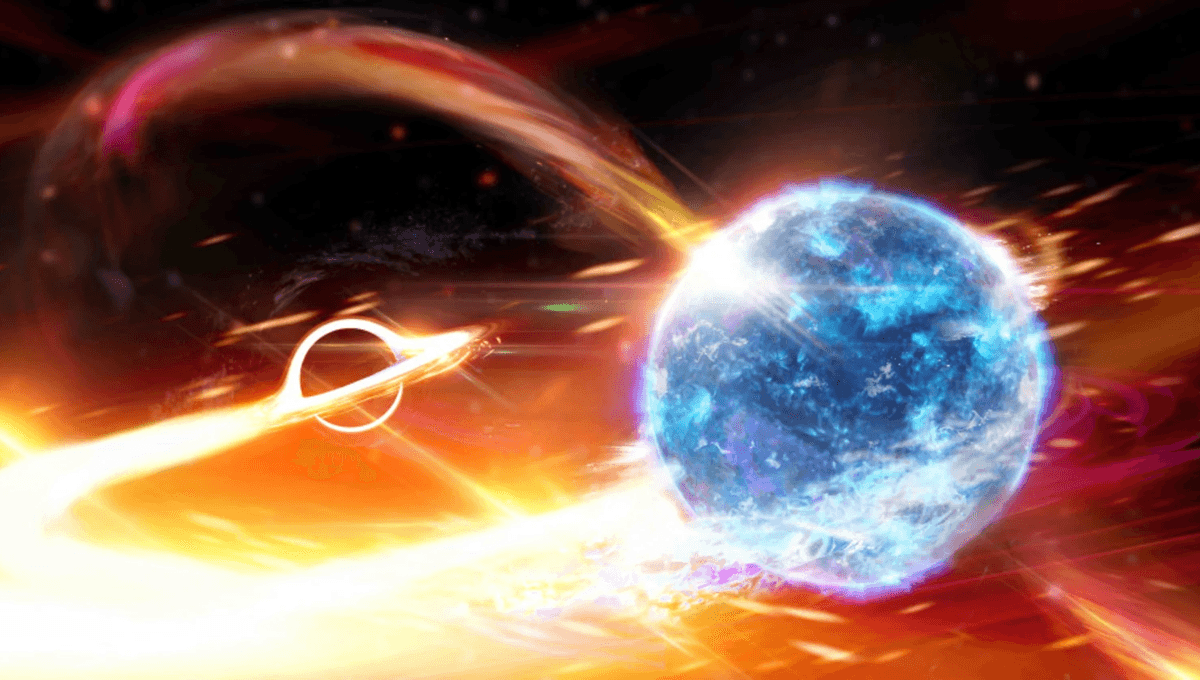
In a single decade, we have gone from the first-ever gravitational wave detection to several hundred of them. Every time there is a new possible detection, an alert is sent out, so observatories around the world can try to catch a possible light counterpart to such an event. One such alert caught the eye of many people last week – its mass is much smaller than anything we have seen before.
Let’s stress again that this is a candidate detection, so there is a possibility that this is a fluke. However, while researchers look at how this detection’s evidence can be strengthened, we can explore why it is exciting. After all, if it was produced by a real event, then it would be something we have never seen before.
The gravitational waves that we can detect are produced exclusively by the collision of extremely dense objects: stellar-sized black holes and neutron stars. These objects are the result of massive stars going supernova – although some black holes are the product of previous black hole mergers. Given stars go supernova only above a certain mass, the smallest neutron star and the smallest black hole are over 1.4 times the mass of our Sun and about three times the mass of the Sun, respectively.
Enter gravitational wave candidate S251112cm. The detectors can use the signal to estimate the mass of the whole system after a collision. The estimated mass for S251112cm is smaller than the Sun, suggesting that, if the signal is real, we are looking at a truly incredible pair of objects. One possibility is that the objects in question are neutron stars with a particular traumatic start in life, which leads to a much smaller mass than usual.
This is an extraordinary claim. And thus you would want extraordinary evidence in order to be convincing.
Dr Christopher Berry
“Perhaps some fragmentation during the supernova explosion of the star blasts some materials away or something like that,” gravitational wave scientist Dr Christopher Berry, from the University of Glasgow, told IFLScience. “If we could get a neutron star just below 1 solar mass, that would be really cool because it would tell us something about the astrophysics of neutron stars and potentially something about their formation.”
The objects in question cannot be anything other than a neutron star or a black hole. Even a white dwarf, the dense remnant core of a star like our Sun, is too big to be detected with our current observatories (but maybe one on the Moon could). If the object is a black hole smaller in mass than the Sun, it could not be created from a stellar explosion. It had to be formed in a different way.
“This is the prospect of a primordial black hole. These are black holes formed much earlier in the universe. Basically, you get density fluctuations in the early universe. If those get dense enough, they will collapse down and they can collapse down directly to be a black hole,” Dr Berry told IFLScience. “These primordial black holes have long been theorized in various cosmological models, but we don’t know if they exist.”
How confident are scientists with these results? They are not popping champagne just yet, but they are not discounting it. The false alarm rate is measured in fake events per year, and while binary black holes are now so clear to spot that there’s a false alarm every tens of thousands of years (or much longer in some cases), this event has a false alarm rate of 1 in 6.2 years. So, an excitable skepticism is necessary.
The team will do a deeper analysis of the signal and what the two LIGO detectors were like at the time of detection. It is possible that this is a type of fluke that was unknown before, and the analysis would reveal that to be the case. The work could confirm this as a genuine signal, especially if there’s a detection in light of such a collision, or a detection of more of these events. There’s also the possibility that the signal will remain at roughly the same uncertainty, which might not be particularly useful, but hey, that’s science!
“This candidate that we’re talking about is exciting because it seems to be consistent with having subsolar mass components, assuming the signal is real,” Dr Berry continued. “We can just say there’s a bit of evidence for there being a signal. But then you’ve got to weigh that against your belief that such things exist potentially. This is an extraordinary claim. And thus you would want extraordinary evidence in order to be convincing.”
The gravitational wave observatories have been responsible for the most accurate measurement ever taken by humanity. They have found extraordinary events. If they have found a subsolar compact object, it will be another incredible claim on a long list of achievements. But we are not yet sure if this is a real signa,l and only time will tell if it is.
Source Link: Candidate Gravitational Wave Detection Hints At First-Of-Its-Kind Incredibly Small Object